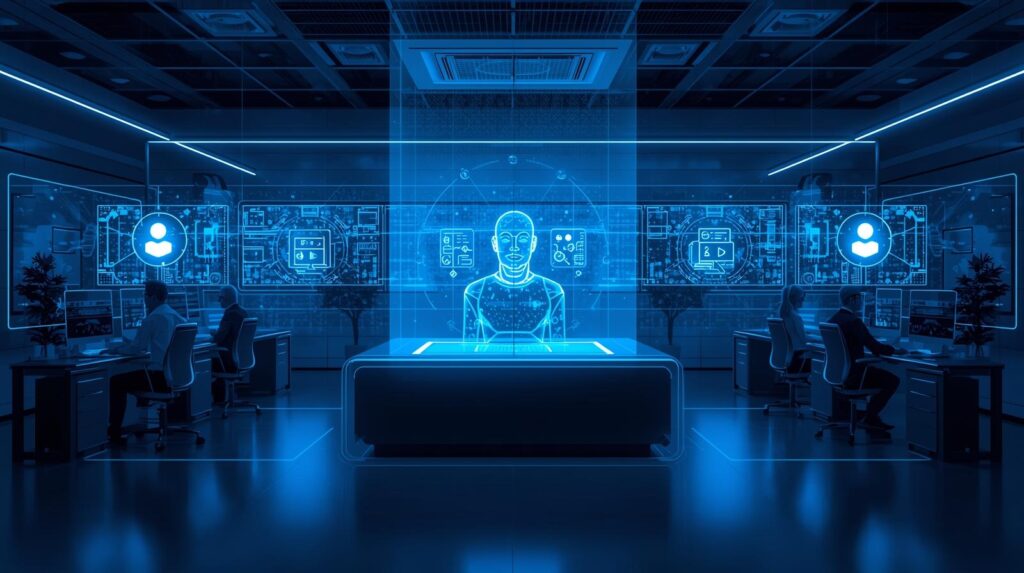AI in the Service Desk: Beyond the Percentages

Will AI really change the Service Desk?
Anyone who works in an IT office knows this: between tickets, locked accounts, and last-minute requests, the service desk is the invisible heart of the company.
Lately, though, everyone’s talking about one thing: artificial intelligence.
And the question is always the same:
How much will it really change the way we work?
To look for an answer, I decided to focus on the internal service desk, the one that helps colleagues and employees, not external customers, since that would open up many more variables.
What a Service Desk does today (and where AI can help)
The daily tasks of a service desk are more or less always the same:
password resets, login issues, account management, hardware failures, software requests, and policy questions.
The real question is: how many of these tasks can we realistically hand over to AI and how many shouldn’t we?
According to several predictive models, 70–80% of IT requests could be automated.
That sounds impressive, but reality is a lot more nuanced and honestly, I think these percentages are slightly inflated by AI itself trying to sound important.
Here are some typical service desk activities, the automation percentages suggested by AI, and my personal take:
| Activity | Estimated Automation (%) |
My Comment |
| Password Reset | 90-100% | You don’t need AI for this, you need an automated process that should’ve existed years ago. |
| Account Lockouts | 80-95% | AI can unlock accounts, but only if there are clear identity verification rules. |
| Application Access Requests | 70-90% | Automatable with well-defined approval flows and role-based access. |
| Hardware Failures | 60-80% | AI can handle triage, but you still need someone to hand over a new laptop. |
| Logistics & Replacements | 50-70% | Works fine for simple cases, not for urgent or complex ones. |
| FAQs & How-To | 95-100% | Here AI shines, it can find answers in seconds across tons of documentation. |
The Illusion of Percentages
AI loves precise numbers — but in reality, the line between “automatable” and “useful” is thin.
Many of these tasks have already been technically automatable for years, but they weren’t, often due to lack of governance, time, or willingness.
The truth is: AI alone isn’t enough.
You still need solid processes, updated policies, and integrated systems.
Without those, even the smartest AI ends up being just another chatbot replying,
“Have you tried turning it off and on again?”
Where AI really makes a difference
Where knowledge is scattered, documentation is endless, and clarity is missing. That’s where AI becomes your best colleague.
Imagine asking a bot:
“How do I request access to the ERP system?”
And instantly getting the right answer from the most up-to-date document, with a direct link.
That’s where AI really helps: in making information fast, contextual, and consistent across large organizations.
A real conversation: why immediate answers matter
A colleague recently told me about his experience with Elastic’s AI-powered support.
He said the AI responded immediately, and with much higher accuracy than a human agent had in a past request.
The simple fact of getting a fast, relevant answer changed the way he perceived the support experience.
That’s a key point: speed matters.
Even if AI can’t solve every issue, it provides instant feedback and when escalation to a human is needed, AI can summarize all previous steps and tests made by the user.
That means no time lost and a smoother handover to the expert.
So yes, maybe those famous “80% automation rates” will eventually be real but not overnight.
The journey will be gradual, and companies will have time to adapt and reorganize their service desks before reaching those high levels.
Faster work doesn’t mean less work
Another reflection that came up: AI doesn’t necessarily mean less work: it means faster work.
As processes speed up, new requests and innovations appear faster too.
More companies will want to adopt AI-powered workflows, and that could actually trigger a new wave of digital acceleration.
So rather than replacing jobs, AI might just change their pace pushing everyone to keep up with an ever-faster rhythm of change and innovation.
When AI gets it wrong
But what happens when AI makes a mistake?
When it assigns a ticket to the wrong team or misinterprets an urgent request?
There will always be a need for a human eye to check, correct, and train the system.
It’s a paradox — automation increases, but so does the invisible work needed to keep it running properly.
The Human Value that remains (and always will)
There are moments no algorithm can replace.
When a colleague calls frustrated because they can’t connect to the VPN, and you calmly help them fix it: that’s real value.
When an IT technician personally delivers a replacement laptop so someone doesn’t lose a full day of work: that’s service.
A service desk isn’t just about handling tickets.
It’s about empathy, listening, and human problem-solving.
AI can assist but it can’t replace that.
Conclusion: AI and Humans, Together
Artificial intelligence will absolutely change the service desk and the way we all work.
But it won’t replace it. It will enhance it.
It’ll make things faster and more organized, but the real leap forward will come only when humans and machines learn to work together and when everyone in the company actually uses the tools efficiently.
In the future, we’ll see hybrid service desks, where:
- AI handles routine requests and predicts issues, and
- humans focus on tasks that require intuition, empathy, and creativity.
AI won’t steal our jobs.
But it will speed them up and we’ll have to be smart enough not to let it run us over.







